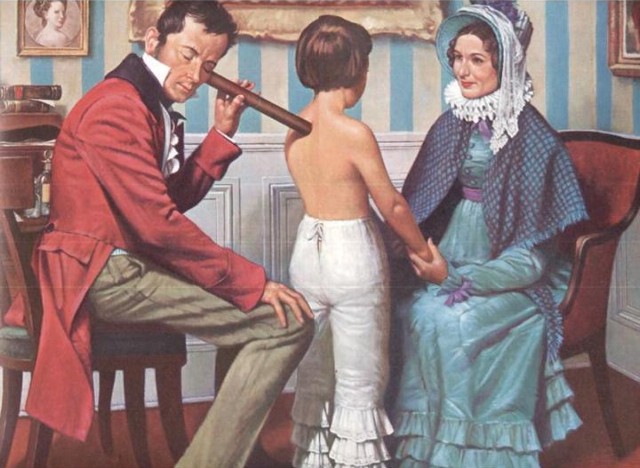
Physicians as early as Hippocrates, used to listen to the heart and lung sounds, by placing their ears directly on the chest of the patient. They would use a handkerchief to avoid direct contact with the chest.
One day in 1816, a French physician Laennec observed children playing with a long hollow stick. He was amazed to notice that the minute sounds made in one end of the stick were amplified and transmitted to the other end.
Subsequently he had to listen to the chest of a young woman. Instead of placing his ear on her chest, he rolled several sheets of paper into a cylinder and listened through it. He was thrilled that he could hear the heart and lung sounds much better than ever before.

We have come a very long way, but it all started with the modesty and curiosity of a French physician!